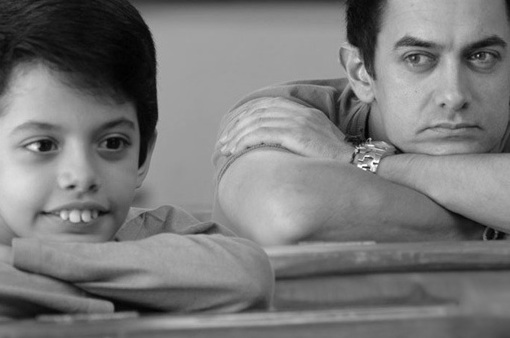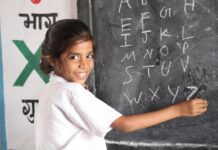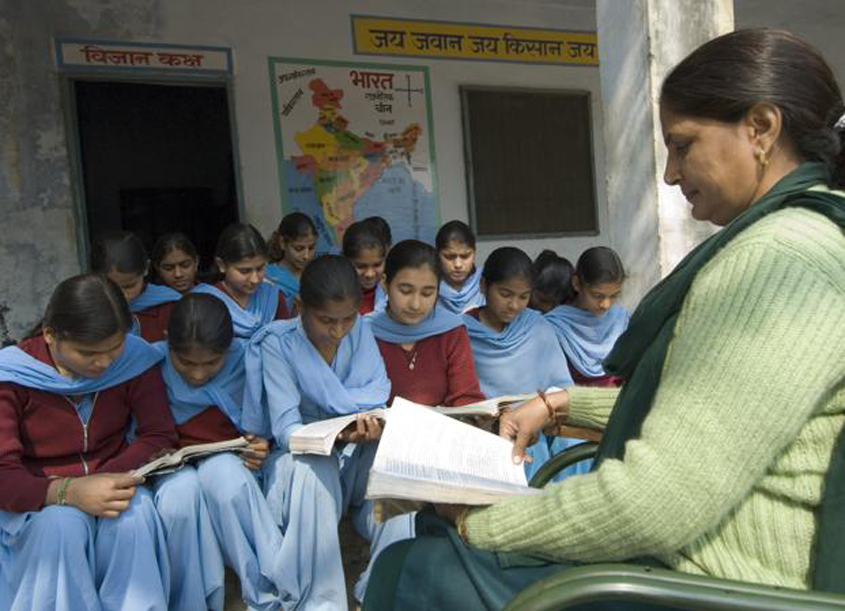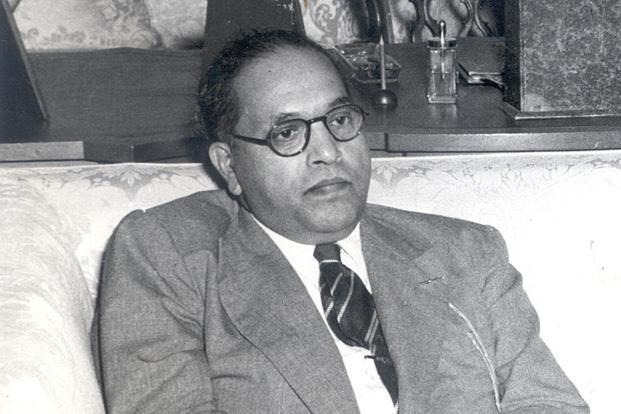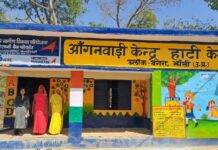With heightened pedagogic sensibilities an educator has come forward with penetrating insights: the mode of engagement a teacher ought to evolve, while negotiating with children with specific learning disabilities.
By Annie John
The Right to Education Act (RTE) of 2009, when taken in the context of children with disability, suggests that if a child with a disability is unable to participate in the process of learning, the institution is required to put accommodations in places that make participation possible. The Act also implies that children with disabilities are to be integrated into the school environment, and are to be provided with reasonable accommodations, in order for integration to be accomplished.
Specific Learning Disability (SLD) is a hidden disability unlike other disabilities that are clearly seen to be impacting the way a student is able to respond to the environment in which he or she is placed. Students with SLD could have difficulties in reading, writing, spelling, mathematics, reading, comprehension, recalling, or in organizing information, if they are not taught in ways that are suited to their needs. This is despite the fact that they are as able as their peers. In fact, one of the defining inclusion criteria of SLD states that the individual should be functioning at average cognitive levels and that their disability cannot be explained by low intellectual abilities or other physical or psychological disorders (Diagnostic and Statistical Manual 5).
In India, SLD is not yet recognised as a disability, and individuals with this condition are clubbed with those who have intellectual disabilities. There has, however, been a move to remedy this situation and SLD has been included in the, yet to be tabled, draft of the Persons with Disability Act 2012. Implementation of the tenets of the RTE Act with special reference to individuals with SLD, requires changes in education policy and practice that are in keeping with current understanding and developments. Thus far, in India, parents and NGOs have been in the forefront of leading the advocacy movement, and although this has resulted in a certain amount of awareness and action towards granting these rights, this is restricted to pockets of the population, mainly centred in some of the larger cities.
John Rawls in his theory of social justice, which is commonly referred to as ‘justice as fairness’ (2003), upholds the protection of equal access, and posits that something is just if it promotes equal access and unjust if it does not. If this theory is seen in the context of education, a classroom is not just or fair if it does not promote equal access to the experience of education that takes place within its walls. As the goal of education is learning to learn, or the attainment of knowledge, then the learning needs of all students in the classroom are to be taken into consideration, so that they can all achieve the same goal.
Equality and justice in the classroom can take many forms. Consider the case of two students – one who is a fluent reader and the other who stumbles over words (with a reading disability), but whose ability to reason and analyse is on par with the first student. Should the teacher treat these two students in the same way by giving them both the same comprehension passage and asking them to complete it within an identical time limit? This would clearly be unjust to the student with a reading disability. Hence, if a child with SLD is not taught the way he or she can learn, or given special accommodations that allow that learning to take place or demonstrate learning, then the child is obstructed from reaching the goal of academic improvement, and this is unjust. Therefore it is right to say that, it is just to treat children differently (in the way they are taught), than to treat them equally and not achieve an outcome that is equitable (i.e., equal access to the same curriculum.(Emma Smith, 2012).
Early detection of and intervention in SLD can occur in the primary years when adults in the students’ immediate sphere of influence are aware of, and sensitive to, the difficulties the child is facing in acquiring skills necessary for school. Teachers, who are equipped with this skill, are valuable as screening tools, as they can identify students at risk and initiate measures to support their learning. Scaffolding children’s learning through their early years, and providing them with tools, to cope with and compensate for their specific learning difficulties, allows them to become independent learners. This, in turn, contributes to their social integration and emotional well-being. An inclusive setting with a teaching practice that suits the varied needs of students would be the ideal situation for the student.
There is considerable research that supports the view that students with SLD do much better in the areas of academic and social development, in an inclusive setting (Holloway, 2001), than if they are taught in a complete pull-out or separate setting. Inclusive education in this context means that students with SLD are in the classroom along with their peers without SLD while they learn. However, simply placing them in the classroom does not fulfil the criterion of inclusive education. Inclusive methods of instruction like Co-teaching, which includes One Teach, One Assist, Station Teaching, Parallel Teaching, Alternative Teaching, and Team Teaching; Differentiated Instruction and Peer-Mediated Instruction are some of the better known strategies that have been used effectively for and with students with SLD (Ford, 2013).
Inclusive teaching practices also make use of accommodations that allow a student with SLD to access the curriculum and demonstrate learning. These accommodations of presentation, response, setting or scheduling and of curriculum can be used in the classroom as well as in examinations. This allows them to access the curriculum as well as in test taking situations, so that they can learn and compete with their peers on a level playing field.
Our educational boards in India, including some state boards, do provide Accommodations or Special arrangements for students with SLD when they write their 10th and 12th board examinations. The most commonly granted of these are extra time, use of a reader, a scribe or a word processor according to the child’s needs. However, many schools do not make it possible for students to use these accommodations during their learning years, depriving them of effective instructional and learning tools. In addition, if students do not practise using these accommodations during their years in school, they are unlikely to make optimal use of them at the exam. Schools that do not facilitate the use of accommodations, put these students at a disadvantage.
Teacher training in India does not equip teachers to be familiar with classroom behaviour (especially reading and writing) that may indicate the presence of SLD. Most often these students are labelled as lazy or as being unmotivated. Teachers are not taught to handle inclusive classrooms, or introduced to inclusive teaching strategies, and this affects their attitude and beliefs toward students who cannot learn through traditional teaching methods. Teacher attitude contributes in large part to the kind of support and feeling of inclusion in the classroom for all students.
Inclusion in a classroom allows the student with SLD to not only gain in academic functioning, but it also offers them opportunities for social development (Pavri and Luftig, 2000). Students with disabilities often lack skills in initiating and sustaining positive social relationships, and can be actively rejected by their peers and teacher attitude can either promote this social rejection or alleviate it. Hence, professional training of teachers goes a long way in successful inclusion practices.
There are teachers who sense a student’s difficulties in learning, and in the absence of formal training, rely on their own creativity to adapt the curriculum, or scaffold lessons in ways that make it accessible to the student with SLD. However, these supports are sporadic, and not planned or comprehensive and depend on the good intentions of the individual teacher. On the other hand, a trained teacher or special educator would draw up an Individual Education Plan that is put into place with the cooperation and understanding of all the stakeholders concerned.
When teaching practice does not include these students’ learning as part of their objective, things begin to go wrong. If the disability is mild or moderate, the student struggles with the challenges that present themselves in the classroom, but somehow manage to stay under the radar. However, by the time they reach middle school, or when the disability is of a severe nature, these students ‘fail’ to accomplish what is expected of them and parents are often advised to take them to another school. Here the system fails the child, and in the case of families with limited resources, the result is often that the child drops out of school. Among those students who drop out at high school a large percentage are those who were subsequently diagnosed with SLD.
To my knowledge, there are a few schools across the country that support inclusive practices as part of their regular teaching methodology. These institutions are often led by educational practices that promote and support the learning of all students, including providing professional training to teachers to enable them to do the same. This leaves the large majority of schools with teachers who are not familiar with the construct of SLD, and they are at a loss when they have to teach students with this disability.
Access to special educational instruction is then restricted to students who enjoy certain socio-economic privileges. They are fortunate to be around adults who are aware of this condition and the interventions that can be provided for the same, and in addition to be part of a support system that has sufficient monetary resources for its implementation. When, in fact, as part of the RTE Act, this is a resource that should be available to all. And if this were to be, we would be justified in comparing educational outcome, as extensively as we currently do.
Annie John, Ph.D., a Clinical Psychologist, has worked for over two decades as a School Psychologist at Mallya Aditi International School, Bangalore.
References
American Psychiatric Association. (2013). Diagnostic and statistical manual of mental
disorders (5th ed.). Arlington, VA: American Psychiatric Publishing. Available online at: http://dyslexiahelp.umich.edu/sites/default/files/IDA_DSM-5%20Changes.pdf
Ford, J. (2013). Educating Students with Learning Disabilities in Inclusive Classrooms. Electronic Journal for Inclusive Education. Volume 3, Number 1 Vol. 3, No. 1 (Fall/Winter 2013) Article 2. Available online at:
http://www.ascd.org/publications/educational-leadership/mar01/vol58/num06/-Inclusion-and-Students-with-Learning-Disabilities.aspxHolloway, John. (2001).Inclusion and Students with Learning Disabilities. Educational Leadership. March 2001 | Volume 58 | Number 6
Pages 86-88. Available online at:
http://www.ascd.org/publications/educational-leadership/mar01/vol58/num06/-Inclusion-and-Students-with-Learning-Disabilities.aspx
Pavri, S., & Luftig, R. (2000). The Social Face of Inclusive education: Are Students with Learning Disabilities Really Included in the Classroom? Preventing School Failure. Available online at:
http://www.ldonline.org/article/5855/
Smith, E. (2012). Key Issues in Education and Social Justice. Sage Publications Limited.
The Right of Children to Free and Compulsive Education Act, 2009. Available online at:
http://ssa.nic.in/rte-1/RTE%203rrd%20year_17%20Jan%202014%20-%20for%20mail.pdf
This article is published in The New Leam, April Issue( Vol.2 No.11) and available in print version.
To buy contact us or write at thenewleam@gmail.com
Or visit FlipKart.com

